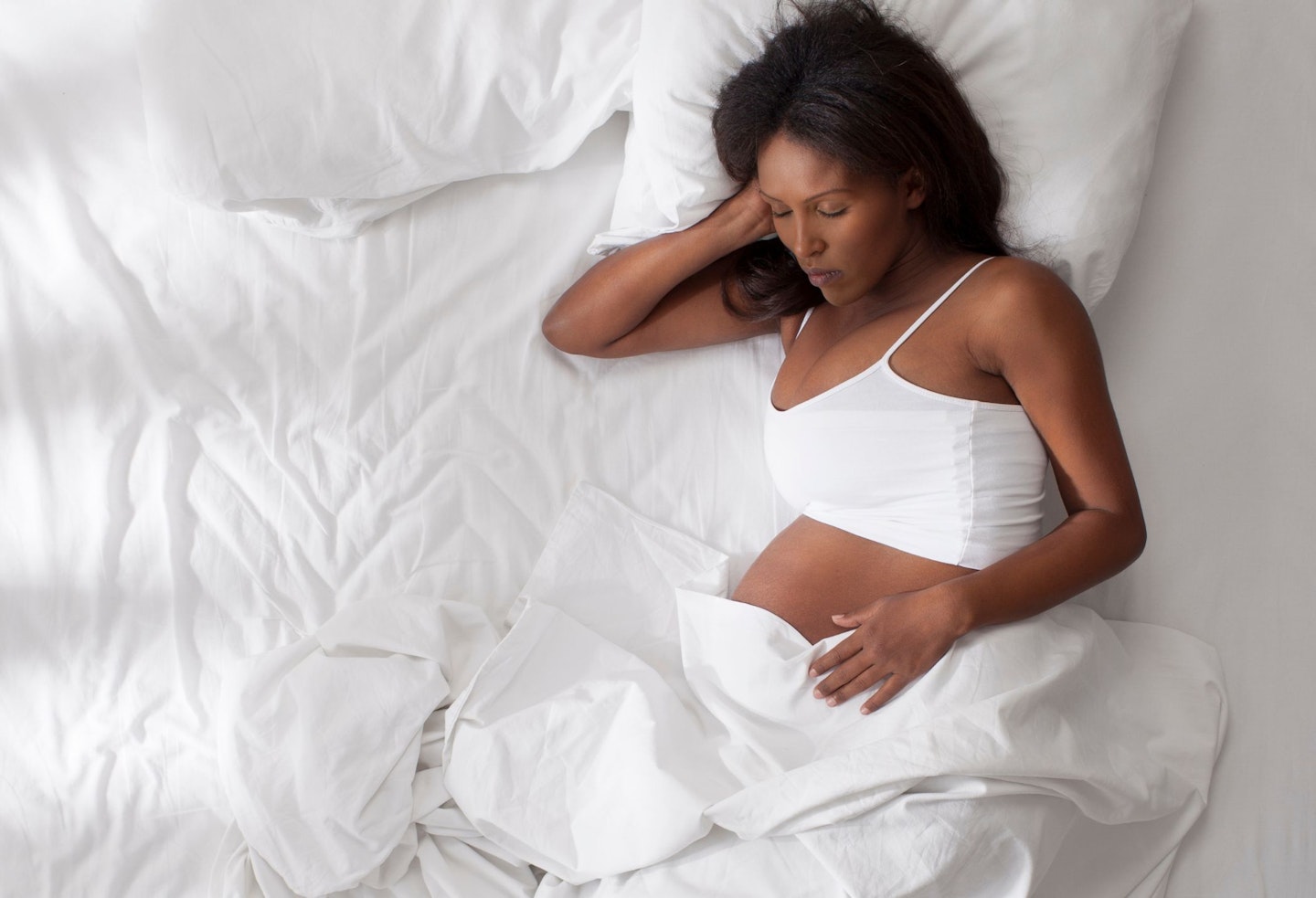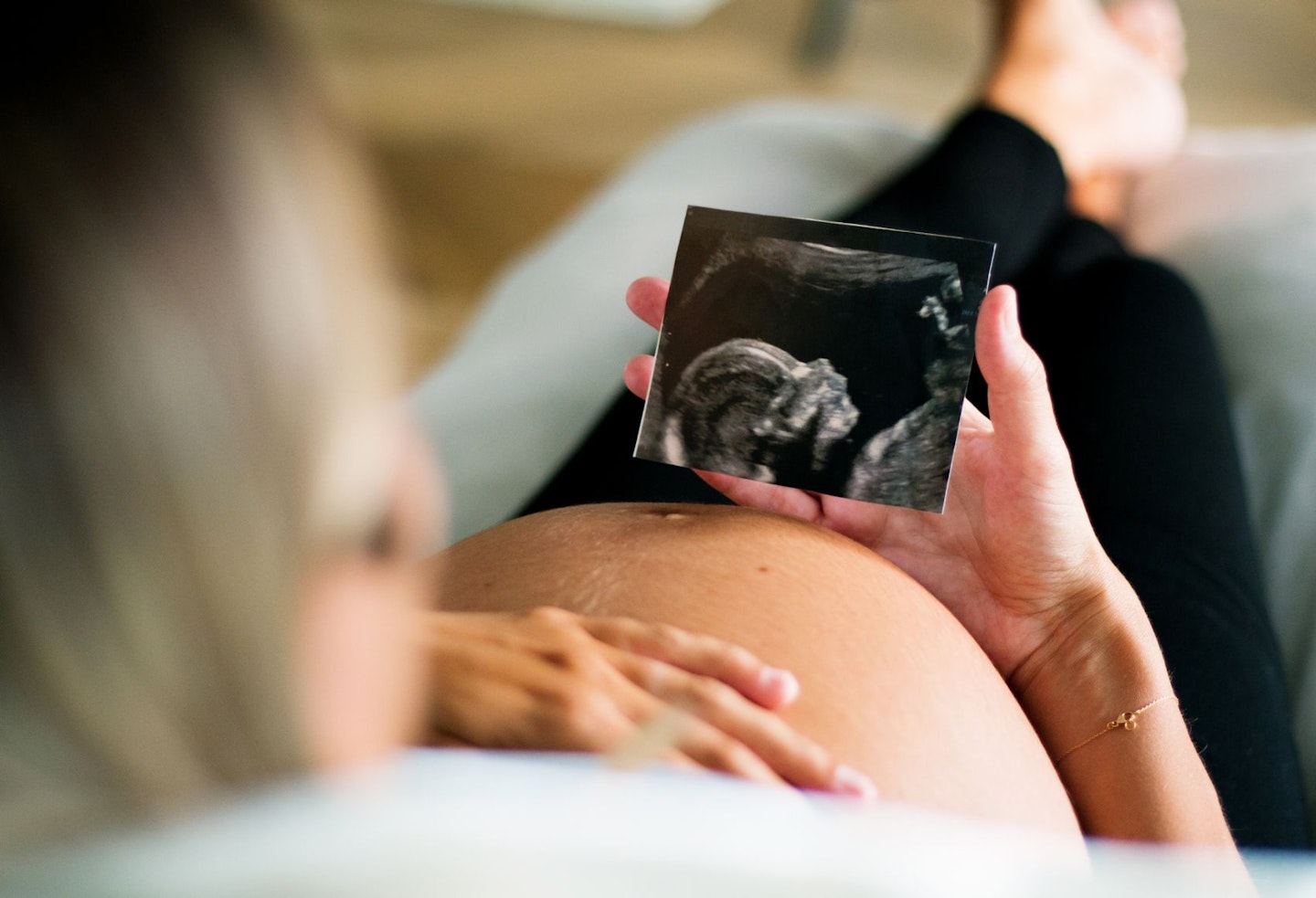
Medically Reviewed by: Lesley Bland BA (Hons), BSc (Hons) Midwifery Studies
The excitement of discovering your baby’s gender has made gender reveal parties more popular than ever, with studies showing that twice as many parents now find out before birth.
From cravings to belly shape, plenty of old wives’ tales claim to predict if you’re having a boy. But do any of them hold true? As Lesley Bland, registered midwife and consultant midwife for My Expert Midwife, puts it, “Old wives’ tales are stories passed down through generations. It’s absolutely not possible to determine the sex of a baby using these tales — though your odds are 50:50!”
In this article, we'll establish when the baby's sex is determined, then separate fact from fiction, debunking the myths first, and then sharing the real ways to discover if you're having a baby boy.

When is a baby’s sex determined?
A baby’s sex is determined at conception, though the development of sex organs doesn’t happen until between weeks 7 and 12 of pregnancy.
The moment the sperm meets the egg, the baby receives 23 chromosomes from each parent, including the ones that determine gender, along with other traits like eye colour, hair colour, and even intelligence.
Around week 11, the baby’s genitals start to form, but it will be several weeks before an ultrasound can reveal the sex. That doesn’t stop expectant parents from making their guesses ahead of time.
As Lesley explains, “A baby’s sex is decided when the sperm fertilises the egg. The egg has two X chromosomes, while the sperm can have either an X or a Y chromosome. If the sperm carries an X, the baby will be female (XX). If the sperm carries a Y, the baby will be male (XY).”
The myths about signs you’re having a boy
Ah, old wives’ tales — they’re like the comfort food of pregnancy conversations. They’re fun, nostalgic, and just a little bit silly. Let’s take a look at the most common myths and see if they hold any truth.
As Lesley says, "There are no signs or symptoms, such as nausea and vomiting, cold feet, acne, or 'carrying high,' that determine whether your baby is male or female."
So, although they're fun, take all these myths with a grain of salt.
Does no morning sickness mean I'm having a boy?
The truth is that the severity of morning sickness has little to do with your baby’s gender. It’s actually more about the hormonal changes your body goes through during pregnancy, particularly the increase in human chorionic gonadotropin.
While some studies suggest women carrying girls may experience more severe morning sickness due to higher hCG levels, it's not a definitive sign of gender. There is no link guaranteed, and morning sickness can vary dramatically from one pregnancy to the next, regardless of your baby’s gender.
If my heart rate is slower than 140 BPM, am I having a boy?
The idea that a baby's heart rate can predict gender is a myth. Research from Fetal Diagnosis and Therapy shows that in the first trimester, baby boys have an average heart rate of about 154.9 bpm, while baby girls average 151.7 bpm — virtually no difference.
Lesley explains, "Early in pregnancy, all babies have higher heart rates around 170 bpm at 10 weeks, dropping to about 130 bpm at full term. But heart rate isn’t linked to gender. It can change based on factors like the baby’s activity level or even if mum has a fever." So, if you've heard that a faster heartbeat means a girl, you can safely ignore this old wives’ tale!

If I'm carrying low, does it mean I'm having a boy?
How you carry your baby depends on your body shape, muscle tone, and the baby’s position, not gender.
Lesley explains, "Carrying high or low is influenced by your physical characteristics, not whether you're having a boy or girl." Research from the University of Utah confirms that first pregnancies often appear higher, while later ones sit lower due to a stretched abdominal wall, but gender has nothing to do with it!
Does craving salty foods mean I'm having a boy?
Cravings are common in pregnancy but have nothing to do with the baby’s gender. They’re driven by hormonal changes and nutritional needs, not whether you're having a boy or a girl.
While you might crave salty foods, it could be due to dehydration, stress, or electrolyte balance. There's no scientific link between cravings and gender, but on the bright side, the National Institutes of Health found that women with cravings were more likely to have a normal delivery!
Does baby's position predict gender?
The Ramzi Theory claims that the placenta position on an early ultrasound can predict gender, right for a boy, left for a girl. But there’s no scientific proof to back this up.
Lesley confirms it’s just another myth, with only a 50% accuracy rate — no better than a coin flip. While some studies suggest higher accuracy, factors like womb space and body shape determine the baby’s position, not gender. So, enjoy the guessing game, but don’t paint the nursery just yet.
Does bright-coloured urine mean I'm having a boy?
The colour of your urine has far more to do with hydration than it does with your baby's gender. Staying hydrated during pregnancy is important for both you and your baby, so it's best to drink plenty of fluids and maintain a balanced diet. There’s no evidence linking urine colour to the sex of your baby.
Does pregnancy glow and acne predict gender?
Acne during pregnancy is common and typically caused by hormonal fluctuations that increase oil production in your skin, not the gender of your growing child. Thankfully, pregnancy acne usually clears up as hormones stabilise.

If Dad gains weight, does it mean we're having a boy?
Some fathers-to-be may experience "Couvade syndrome," which involves sympathetic pregnancy symptoms like weight gain, nausea, or mood swings. However, this has nothing to do with the baby’s gender. Couvade syndrome is more about the emotional connection between partners and doesn’t provide any clues about whether you're having a boy or a girl.
Does cold feet mean I'm having a boy?
Having cold feet doesn't necessarily mean you're having a boy. Many pregnant women feel colder than usual, especially in the early months, due to hormonal changes and shifts in circulation. This myth likely comes from the idea that cold feet mean you're having a boy, but there’s no scientific evidence to back it up. Feeling cold is just a normal pregnancy symptom, unrelated to your baby’s gender.
Does feeling angry during pregnancy mean I'm having a boy?
Mood swings are completely normal during pregnancy due to hormonal changes. These emotional ups and downs don’t point to a specific gender. So while you may feel a little more fiery at times, it’s simply part of the pregnancy journey!
If my hair looks good, does it mean I'm having a boy?
Pregnancy hormones can affect hair growth, but whether your hair grows faster or thicker has no link to your baby’s gender. It's all about how your body responds to the changes during pregnancy.

Does sleeping on my left side mean I'm having a boy?
Your sleeping position is more about comfort and blood circulation than predicting gender. There are no studies supporting the idea that where you sleep determines whether you're having a boy or a girl.
Do more headaches mean I'm having a boy?
The NHS says headaches are common during pregnancy, especially in the first trimester, due to hormonal changes. While some people associate them with carrying a boy, headaches are just a normal pregnancy symptom and can happen with any baby.
However, a headache can sometimes be a symptom of pre-eclampsia, which can lead to serious complications if it's not monitored and treated.
Does more weight gain mean I'm having a boy?
Where you gain weight during pregnancy depends on your body type and how your uterus expands. Gaining weight in front doesn’t indicate whether you're having a boy or a girl—it’s simply how your body adapts to pregnancy.
Does the widening of your nose mean you're having a boy?
Some people experience swelling in the nose due to pregnancy hormone changes, this is called pregnancy nose. The Ohio State University explains, "Estrogen dilates blood vessels, causing swelling around the entire body — including the nose. This can lead to a broadening, or bulbosity, at the tip of the nose." However, this has no connection to your baby’s gender.
Do strong baby movements mean it's a boy?
Babies move differently based on their development and position in the womb. The strength or frequency of their movements is not linked to gender.
Do cravings for protein mean it's a boy?
Pregnancy cravings are influenced by hormonal changes, nutritional needs, and personal preferences. Cravings for protein have no direct connection to your baby’s gender.
Does a faint or light-coloured linea nigra mean it's a boy?
The appearance of the linea nigra is a normal pregnancy symptom caused by hormonal changes. The darkness or lightness of the line has no connection to your baby’s gender.
If your ring moves in a circular motion, will your baby be a boy?
The ring test is an old wives' tale with no scientific basis. The way the ring moves is likely due to the motion of the string or your hand, not the baby’s gender.
Do dry hands during pregnancy mean it's a boy?
Pregnancy hormones can affect your skin, and dry hands are a common symptom of pregnancy, but it does not necessarily mean that you're having a boy.
Can the Chinese Gender Calendar predict your baby's gender?
The Chinese Gender Calendar is a fun old wives' tale, and while some people swear by it, there’s no scientific proof to support its accuracy. It’s based on a traditional chart, but just like many gender prediction methods, it’s about as reliable as flipping a coin.
Want to give it a try? You can use our Chinese Gender Predictor Tool to see what it says, but remember, it's all in good fun! The real magic happens when you meet your little one.

What are the scientific signs you’re having a boy?
Alright, so the myths are fun, but let’s talk about the real ways you can find out if you’re having a boy.
According to Lesley, “The only ways that indicate whether you are carrying a male or female are Non-Invasive Prenatal Testing, Chorionic Villus Sampling, Amniocentesis, and the mid-pregnancy, 20-week Anomaly Ultrasound Scan.
However, and this is important, none of the more accurate ways named above are 100%. There is always the occasional baby who surprises us!”
NIPT (Non-Invasive Prenatal Testing)
This blood test, done as early as 10 weeks, can reveal your baby’s gender with over 99% accuracy.
Ultrasound
Most parents find out during their 20-week scan. However, accuracy can depend on your baby’s position (so cross those fingers that the baby cooperates!).
Amniocentesis or CVS
These tests, usually done for genetic reasons, can also confirm gender. However, they’re invasive and not typically done just to determine sex.
Urine gender tests
A urine gender test is another popular test that parents can buy to help deliver results as early as 8 to 10 weeks. They work just like a pregnancy test and results are readable within a minute. However, it is not for people who are looking for a 100% accurate result as there is hardly any DNA in urine and the tests themselves also state that they are not 100% accurate.
Enjoy the guessing game
At the end of the day, trying to guess whether you’re having a girl or a boy is all part of the fun! Whether you're debating old wives' tales with family or indulging in your sweet or salty cravings, it's all about enjoying the anticipation.
Sure, it’s exciting to picture a room filled with baby boy blue or soft pink, but the real magic comes when you finally meet your little one, no matter the gender.
About the expert
Lesley Bland has also provided her expert advice and medically reviewed this article. Lesley is a Registered Midwife and Consultant Midwife for My Expert Midwife. She began her Midwifery career working in large teaching hospitals, rotating through all clinical areas with particular emphasis on antenatal and intrapartum care. Lesley qualified as a mentor of students and developed a passion for education, specialising as a Clinical Educator, teaching the maternity multidisciplinary team.
About the author
Anne Lora Scagliusi is a Senior Digital Writer at Mother & Baby. She is a Scotland-based journalist with over a decade of international writing experience, specialising in women’s health, maternal mental health, and wellness. Her work has been featured in Vanity Fair, Marie Claire, and Glamour and has appeared on several Vogue global editions. She is mum to a one-year-old bambino and lives between Italy and the UK.
